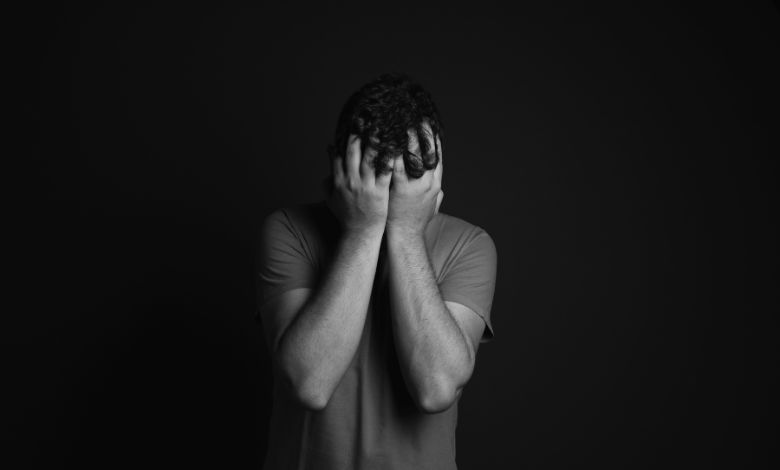How can ambulophobia affect daily life? Discover its impact and explore steps to manage this fear and regain your independence.
Living with a fear of walking might seem hard to imagine, but for people with ambulophobia, it’s a real and daily struggle. It’s more than just a fear, it feels like an invisible wall that stops you from stepping outside, seeing the world, or enjoying something as simple as a walk in the park. This can also lead to low productivity in the workplace when the fear prevents someone from commuting or participating fully in their professional life.
If you’ve ever wondered what it’s like to live with ambulophobia or how to manage it, you’re in the right place.
I’ve seen someone close to me go through this, so I know how deeply it can affect someone’s life. It’s not just about walking, it’s about being able to live freely. Let’s talk about what this condition is, how it gets in the way of daily life and work, and most importantly, what you can do to take back control and find your independence again.
Article Breakdown
What Is Ambulophobia?

Ambulophobia, derived from the Latin word “ambulare” (to walk), is the fear of walking or moving. It’s classified as a specific phobia, which means it’s an irrational fear tied to a particular activity. For those who have it, this fear isn’t something they can “snap out of.” It’s deeply ingrained and often linked to traumatic experiences, underlying anxiety disorders, or physical injuries.
This condition can vary in intensity. Some people feel uneasy only in specific scenarios, like walking on slippery surfaces or crowded streets. Others may find the act of walking, even on stable ground, terrifying. It’s not about being lazy or overly cautious; it’s about feeling completely paralyzed by fear.
Physical Challenges of Ambulophobia
One of the most visible ways ambulophobia affects daily life is through physical limitations. Imagine wanting to grab a coffee from your favorite shop but being unable to walk there. The frustration and helplessness are real.
Restricted Mobility
For individuals with ambulophobia, mobility isn’t just limited; it’s often nonexistent. Fear forces them to avoid walking, even for essential activities. This might mean relying heavily on loved ones for errands or appointments. It’s not uncommon for people to become housebound, which further isolates them from the outside world.
Take Sarah, for example. After a severe fall on a wet sidewalk, she developed a fear of walking on any uneven surface. The thought of stepping outside her home felt like navigating a minefield. Her independence dwindled, and she relied on delivery services and family members for even the simplest tasks.
Impact on Physical Health
When walking becomes a fear, physical health can take a significant hit. Prolonged inactivity can lead to muscle weakness, joint stiffness, and even cardiovascular issues. Over time, the lack of movement can exacerbate feelings of inadequacy and frustration, creating a vicious cycle.
Emotional and Psychological Impact
Ambulophobia isn’t just a physical challenge; it’s a psychological battle, too. The fear of walking often leads to a cascade of emotional struggles.
Increased Anxiety
For many, just thinking about walking can trigger a flood of anxious thoughts. “What if I trip?” “What if people stare at me?” “What if I’m stuck and can’t move?” These worries often spiral into full-blown panic attacks, leaving the person feeling defeated before they even attempt to take a step.
Social Isolation
When walking becomes a source of fear, social activities quickly fall by the wayside. Dinner with friends? Not if it requires walking to the restaurant. A weekend picnic? Too risky if the terrain is uneven. Over time, this isolation can lead to feelings of loneliness and depression.
I remember my uncle, who dealt with ambulophobia after a serious car accident. He’d make excuses to skip family gatherings, and it wasn’t until much later that we realized his avoidance stemmed from fear, not disinterest. It’s a lonely place to be when even your loved ones don’t fully understand what you’re going through.
Everyday Struggles
Ambulophobia doesn’t just affect the big things in life; it’s the small, everyday activities that become monumental challenges.
Employment Challenges
Holding down a job becomes incredibly tough. Whether it’s walking to meetings, commuting, or even moving around the office, the fear can feel insurmountable. For many, this means giving up their careers or finding remote work that doesn’t require leaving the house.
Errands and Independence
Simple tasks like grocery shopping or picking up prescriptions can feel like climbing a mountain. Without mobility, people often rely on delivery services or the goodwill of friends and family. While this helps in the short term, it can further erode their sense of independence.
Impact on Relationships
Ambulophobia can strain relationships. Friends might not understand why someone cancels plans repeatedly. Partners may feel the burden of additional responsibilities. Without open communication, these relationships can suffer.
Coping and Treatment Options
The good news? Ambulophobia is treatable. With patience, determination, and the right support, it’s possible to regain control and overcome this fear.
Therapeutic Interventions
One of the most effective treatments is cognitive-behavioral therapy (CBT). This approach helps individuals identify and challenge irrational thoughts about walking. Over time, they’re taught to replace these thoughts with more rational, empowering beliefs.
Another powerful tool is exposure therapy, where individuals gradually face their fear in controlled, manageable steps. For example, someone might start by visualizing themselves walking, then progress to standing, taking a step, and eventually walking short distances with support.
Support Systems
Support groups, both in-person and online, can be incredibly helpful. Sharing experiences with others who understand what you’re going through can provide comfort and practical tips. Counseling for loved ones can also help them better support and empathize with those battling ambulophobia.
Practical Tips for Daily Life
Here are some actionable strategies to make daily life easier:
- Start Small: Break tasks into smaller, less intimidating steps. For example, focus on walking to the mailbox before attempting a longer distance.
- Use Mobility Aids: Devices like canes or walkers can provide both physical and psychological support, reducing the fear of falling.
- Practice Mindfulness: Techniques like deep breathing and meditation can help manage anxiety and keep fear in check.
- Seek Professional Help: Don’t hesitate to consult a therapist or counselor who specializes in phobias and anxiety disorders.
Medication
In some cases, medications such as anti-anxiety drugs or beta-blockers may be prescribed to manage the symptoms of ambulophobia. While not a cure, they can provide relief and make therapy more effective.
Finding Strength in the Journey
When I think about ambulophobia, I think of my uncle’s journey. It wasn’t linear, and it certainly wasn’t easy. But with time, therapy, and the unwavering support of family, he made progress. I’ll never forget the day he walked into our backyard barbecue for the first time in months. It wasn’t far, but it was a monumental step, both literally and figuratively.
His journey taught me that no matter how overwhelming a fear may seem, it’s possible to overcome it with the right tools and mindset. Ambulophobia doesn’t have to define your life. With courage and support, you can reclaim your independence and rediscover the joys of walking, and living.
Key Takeaways
- Don’t suffer in silence: Reach out to loved ones and professionals for support.
- Be patient with yourself: Overcoming ambulophobia takes time and effort. Celebrate even small successes.
- Stay positive: Replace negative thoughts with empowering beliefs.
- Set achievable goals: Don’t try to tackle everything at once. Start small and build from there.
- Lean on your support system: Surround yourself with understanding, supportive people who can help you through the tough times.
Additional Resources:
- Tips for Coping with Ambulophobia and Reclaiming Your Independence: This article explores self-help strategies like gradual exposure and relaxation techniques to help individuals manage ambulophobia effectively.
- The Power of Cognitive Behavioral Therapy in Overcoming Ambulophobia: Discover how cognitive-behavioral therapy can be a powerful tool in treating anxiety disorders, including ambulophobia.
- Cognitive-Behavioral Therapy for Phobias: Learn about the mental training program that focuses on the interplay of thoughts, feelings, and actions to overcome phobias.
- How Support Groups Can Help Individuals Battling Ambulophobia: This resource highlights the role of support groups in providing additional tools and coping mechanisms for those with ambulophobia.
- Managing Daily Life with Ambulophobia: Practical Strategies and Tools: Offers various strategies to help individuals cope with the fear of falling, enhancing confidence and independence.



